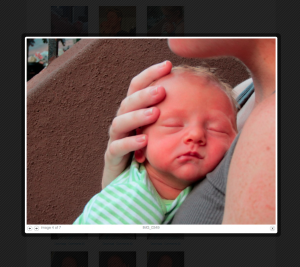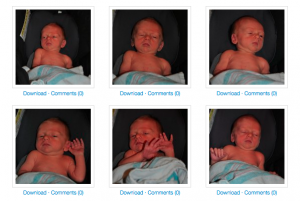A few months ago, I was contacted by Kathryn Weinstein, a local graphic designer and member of the graphic design faculty at Queens College, about co-teaching a WordPress course, for credit toward the Graphic Design degree, in the fall of 2011. Immediately, I felt drawn to the prospect of revisiting my old haunting grounds. But more than that, I was convinced that such a class had potential to benefit students in a few important ways. So I agreed to the project, and Kathryn and I have been planning, off and on, since then.
While the first goal of this fall’s course – titled “WordPress: Beyond the Basics” – is, of course, to serve its enrolled students, Kathryn and I have agreed that we also want our experience to serve as a sort of experiment for future courses, at QC and beyond. In that vein, I’ll be writing occasionally, both here on my personal blog and on our course site, about the process of planning and executing the course. This post will focus on how we’re conceiving and justifying the class, in very broad terms.
What would a WordPress course look like?
The course objectives, in the current draft of our syllabus, look like this:
- to strengthen web-building skills
- to explore the relationship between content, design and organization
- to gain familiarity with standards and best practices in the industry
This suggests a multi-layered approach to the course. On one level (roughly corresponding to the second objective in our list), it’ll be what I take to be typical of a graphic design curriculum. The first and third objectives, which will involve getting our hands dirty with some real coding, call for more justification. A few thoughts:
- As anyone knows who’s ever tried to hire someone to do web work, or land such a gig himself, the term “web designer” has a wide variety of accepted uses. Sometimes it’s used in the strict sense, where the designer delivers comps that are, in turn, implemented by more “technical” folks. Sometimes a “web designer” is a front-end specialist, doing the creative work and the implementation, often at the same time. Sometimes “web designer” means “coder of web stuff”. Most often, the “designer” is the jack-of-all-trades, knowing enough about each stage of the idea-through-implementation process to be able to make it happen. By learning something substantial about web technologies, students will make themselves fit a greater variety of these definitions. That, in turn, means more job opportunities after graduation.
- Even if the designer never touches a CSS declaration after semester’s end, it’s unquestionably beneficial to have at least a rough understanding of how the Web’s underlying technologies work. How many web professionals have been frustrated by site mockups, created by “pure” designers, that are impractical or impossible to translate into markup? More importantly, how many hours and dollars have been wasted in this way? Much of this frustration can be avoided if the relevant parties share a common grasp on some key concepts: the CSS box model; the distinction between client- and server-side processing; progressive enhancement; etc.
- As some of my friends in the digital humanities have argued, there is a general, humanistic argument for learning about how the web works. For one thing, the Web is the medium through which so much of our communication happens – and, by extension, the medium in which our conceptions of others and ourselves are formed. Working with some of the tools that make the Web work is a way of engaging critically with the medium, thereby arriving at a richer understanding of our relationship with it, and how it affects our relationship with the world. On a related note, writing code – whether on the Web or not – is a mode of inquiry that is (arguably) fundamentally different from more traditional academic modes, and (definitely) different enough to make it epistemologically worthwhile. (This last bit is nicely summed up, appropriately enough, by WordPress co-founder Matt Mullenweg’s pithy “scripting is the new literacy”.) Some of us would like to see these kinds of priorities spread throughout the curriculum; this class can serve as a testing ground.
On balance, I see these considerations as a pretty solid justification for the academic value of a course like the one we’re considering.
Why WordPress?
If it’s not too much of a stretch to justify a graphic design course on designing for the web – and, as you might gather from my previous musings, I don’t think it’s a stretch at all – you may still wonder why it makes sense to focus on WordPress.
There are a few reasons. First is a conviction, shared by Kathryn and me, that diving into a complex platform like WordPress will ultimately make for a more engaging and valuable experience than a more staged, “Hello World”-style introduction to web technologies. It’s true that many of our students will never have seen so much as a line of HTML, and it may be true that our job would be easier if we waded in the shallows instead of diving headfirst into WordPress’s morass of HTML, CSS, PHP, MySQL, JavaScript…. But I – a Seasoned Web Professional – didn’t learn about the web that way. I learned by jumping into a complex system, and figuring my way out.
The architecture of WordPress makes this kind of learning easy. Take WP themes. I’ve often heard friends (who were much smarter than me, by the way) complain about the fact that WP’s theming system involves the on-the-fly interpretation of raw PHP – a recipe for security and aesthetic disasters if there ever was one. But this feature/bug also makes the themes readable, and thus hackable. The fact that WP is written largely in procedural PHP means that you can follow its thread of reasoning, change a line of code, and see the changes with a simple browser refresh. No compilation; no MVC framework; no class dependencies. One might argue that these features of WP make it less robust or sophisticated, but they almost certainly lower the bar for the n00b.
Moreover, WordPress is really, really widely used. Starting with WP will give students a sense of what it’s like to develop a website in the actual world. More than that – facility with WP development is something that a budding designer can put on her resumé, and it will actually mean something to those who read it.
From an ideological point of view, I’m a fan of the fact that we’ll be able to build an entire class on totally free technologies. From the LAMP stack, to WordPress, to Firefox and Firebug, we’ll be developing with tools that are free-as-in-beer and free-as-in-speech. That’s good for students in several ways. It means that they won’t have to plop down for expensive licenses. And it means that lessons about data ownership and free software philosophy can come along for the ride.
More to come
In an upcoming post, I’ll be talking in more detail about what we plan to cover in the course. It’s still very much a work in progress – and will be right up through the beginning of the semester, as we won’t know until then about our students’ backgrounds – but I plan to use this space to workshop some ideas. Feedback welcome!




